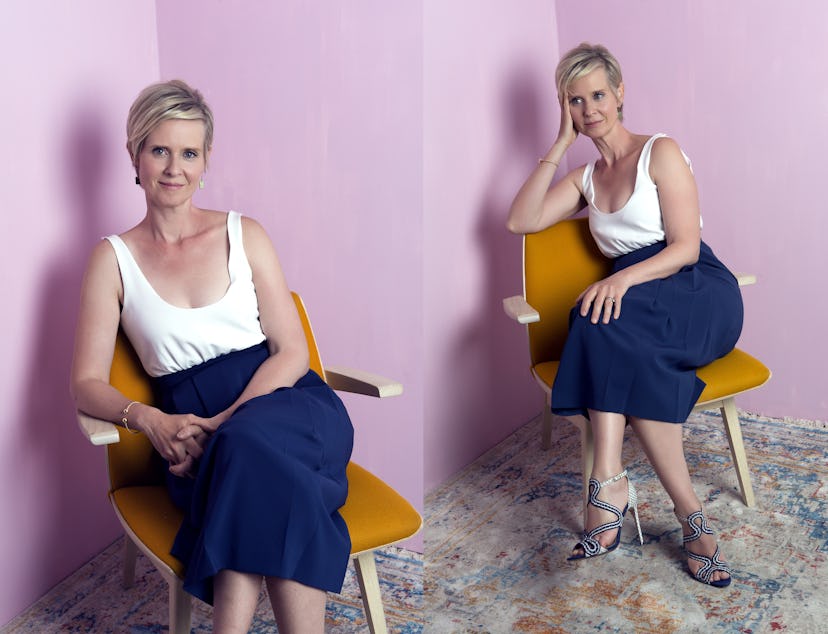Sex and the City Wouldn’t Be So White and Wealthy Today, Cynthia Nixon Hopes
“Of course it’s a feminist show. But I think it has a lot of the failings of the feminist movement in it,” Nixon said in an interview.

Sex and the City is not coming back (leave Miranda out of it, thanks), but if it were, one thing would be different, according to Cynthia Nixon: “We would not have all been white, God forbid,” she said during an interview with IndieWire at the Tribeca Film Festival, where she was promoting her new film, Stray Dolls—her first project to be released since her abortive 2018 gubernatorial campaign. (“It’s nice to be asked about things that are just purely my opinion. You can’t get them wrong,” she told IndieWire.)
But it’s not simply that she would hope to see more ethnic and racial diversity onscreen—it’s also that Sex and the City’s homogeneous casting underscored its failure to engage with how race and gender intersect with class. When the show premiered, “there was so much debate…about whether it was a feminist show or not,” Nixon said. “Of course it’s a feminist show. But I think it has a lot of the failings of the feminist movement in it—in that it’s, like, white, moneyed ladies who are fighting for their empowerment. In a bit of a bubble.” The closest thing to a working-class character, she said, was her character Miranda’s husband, Steve—“never mind a working-class woman, right?”
Another difference: “We wouldn’t all look like that,” Nixon said. Not simply in terms of race but also “the perfection factor. In terms of always looking so incredible,” she went on. “I know that’s the fantasy element, and in terms of the show that was important. But I think there’s a lot of ways that people can be visually compelling without looking—quote-unquote—perfect.”
Though Lena Dunham’s Girls was hailed as the millennial generation’s answer to Sex and the City, it, too, was plagued by criticism that it focused on a specific white, privileged population in its Brooklyn milieu. But, Cynthia Nixon, may we direct your attention to Big Little Lies, a series whose aspirational veneer (the interior design! the sweaters!) papers over the more insidious interplay between race, class, gender, and violence that the show is actually about?
Related: What Would a Sex and the City Reboot Look Like Today?